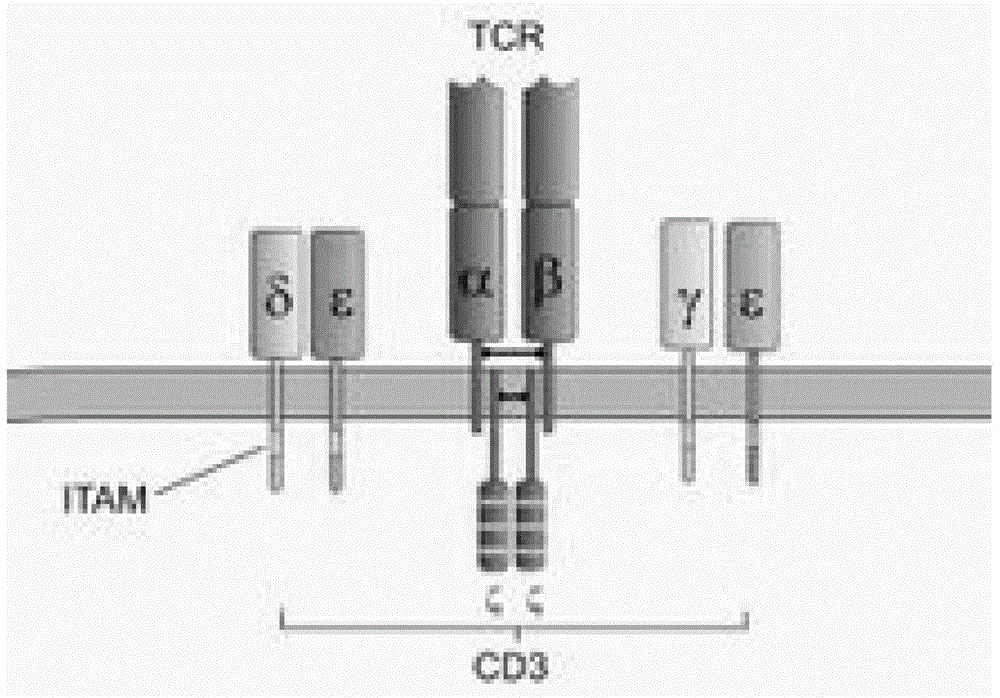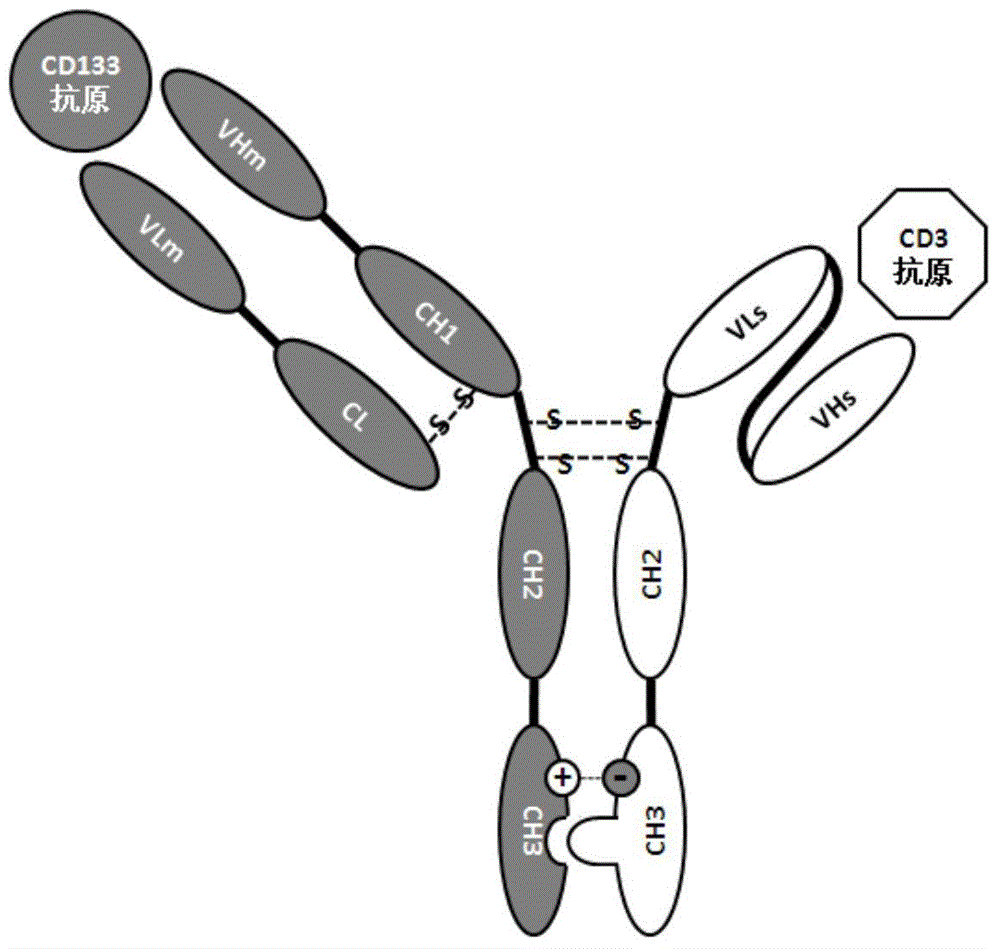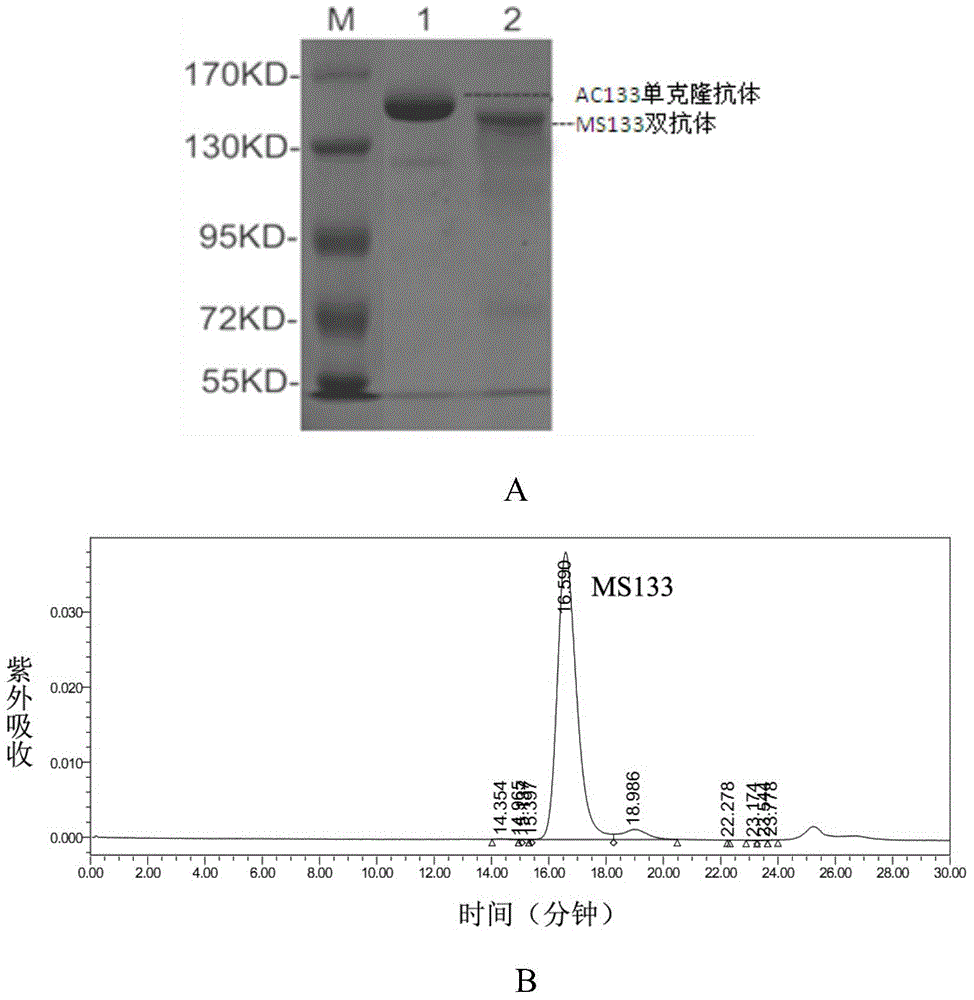Construction and application of bispecific antibody CD133*CD3
A bispecific antibody and antibody technology, applied in the direction of antibody, anti-animal/human immunoglobulin, anti-receptor/cell surface antigen/cell surface determinant immunoglobulin, etc., can solve problems such as application limitations, and achieve Improve efficacy and increase the effect of immunotherapy
- Summary
- Abstract
- Description
- Claims
- Application Information
AI Technical Summary
Problems solved by technology
Method used
Image
Examples
Embodiment 1
[0069] Example 1: Construction of expression vectors for bispecific antibodies (CD133×CD3, MS133)
[0070] 1. Bispecific antibody sequence design
[0071] The bispecific antibody targeting CD133 and CD3 is named MS133 MSBODY, where the monovalent unit is the pair of heavy and light chains against CD133, and the amino acid sequence of the variable region refers to the sequence of monoclonal antibody AC133, see the sequence of US2010 / 0209439 No. 1-4, including anti-CD133 heavy chain and light chain, containing Fab and Fc domains; the single chain unit is in the form of anti-CD3 ScFv-Fc, and the amino acids of the variable region refer to the sequence of monoclonal antibody L2K, see the sequence number of US20070123479 2, including anti-CD3 VH, VL, Fc domains. Among them, the heavy chain Fc of the monovalent unit and the Fc of the single chain unit (same as the heavy chain Fc of human IgG11) are modified by amino acid mutations. For the specific Fc modification process, see PCT / ...
Embodiment 2
[0097] Example 2: Expression and purification of bispecific antibodies
[0098] 1. Expression of bispecific antibody MS133
[0099] The endotoxin-free large-scale extraction kit (Qiagen, 12391) was used for large-scale extraction of plasmids, and the specific operation was performed according to the instructions provided by the manufacturer. CHO-S cells were cultured in CD FortiCHO medium (Invitrogen, Cat. 2 Culture in a cell culture incubator. After preparing the cells, use the Maxcyte STX electroporator to co-transform the plasmid pCHO1.0-AC133-HL-KKW with HPCHO-L2K-ScFv-Fc-LDY according to the manufacturer's instructions (Maxcyte) Transfected into CHO-S cells, the anti-CD133×CD3 bispecific antibody MS133 was expressed. After 14 days of culture, the expression supernatant was harvested by centrifugation at 800×g.
[0100] 2. Purification of bispecific antibody MS133
[0101] The expression supernatant was filtered with a 0.22 μM filter membrane, and all Fc-containing str...
Embodiment 3
[0102] Example 3: Determination of the binding activity of bispecific antibodies to cells (FACS)
[0103] The bispecific antibody of the invention binds to the target antigen on the corresponding cell. In the present invention, HCT116 and HT29 (both purchased from China Center for Type Culture Collection) are used as CD133-positive cells, and human peripheral blood mononuclear cells (hPBMC) cells are used as CD3-positive cells, and the double antibody prepared by the present invention is used to determine the cells binding activity.
[0104] 1. Detection of binding activity of bispecific antibody to HCT116 and HT29 cells by flow cytometry
[0105] Sufficient HCT116 and HT29 cells were cultured, digested with 0.25% trypsin, and collected by centrifugation. At the same time dilute MS133, the concentration is 160nmol. Wash the collected cells twice with PBS+1%FBS, then resuspend the cells in PBS+1%FBS to 4×10 6 cells / ml, the cells were plated in a 96-well plate, 50 μl per wel...
PUM
 Login to View More
Login to View More Abstract
Description
Claims
Application Information
 Login to View More
Login to View More - R&D
- Intellectual Property
- Life Sciences
- Materials
- Tech Scout
- Unparalleled Data Quality
- Higher Quality Content
- 60% Fewer Hallucinations
Browse by: Latest US Patents, China's latest patents, Technical Efficacy Thesaurus, Application Domain, Technology Topic, Popular Technical Reports.
© 2025 PatSnap. All rights reserved.Legal|Privacy policy|Modern Slavery Act Transparency Statement|Sitemap|About US| Contact US: help@patsnap.com



